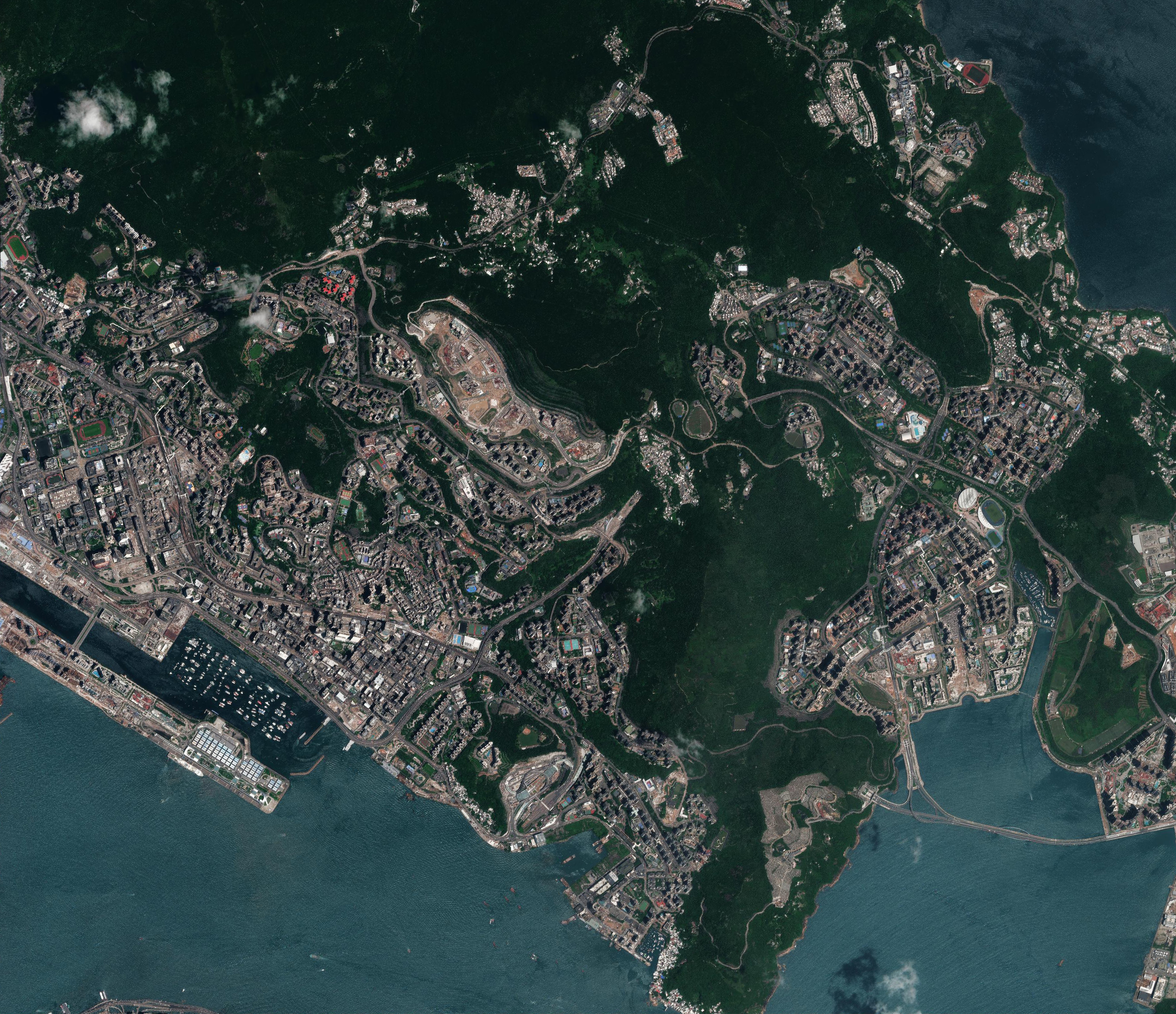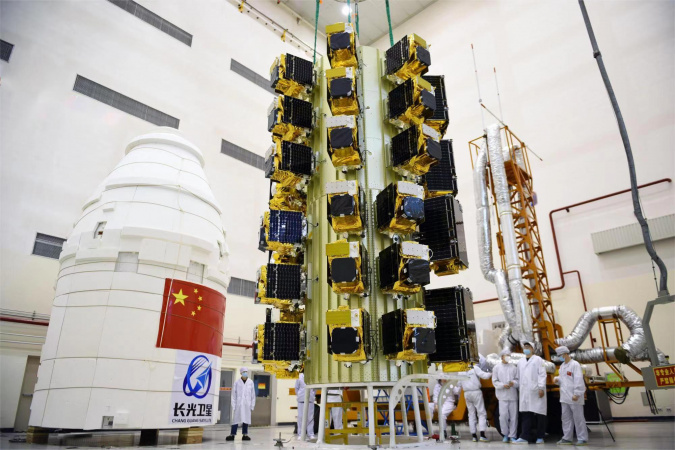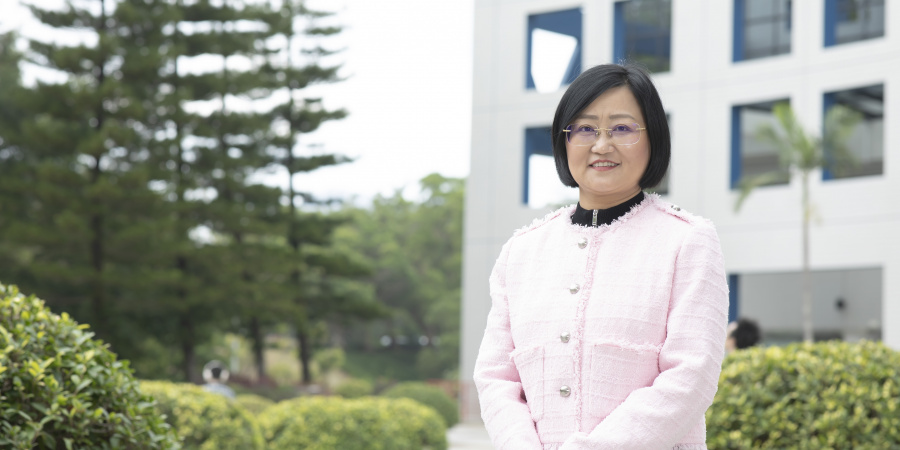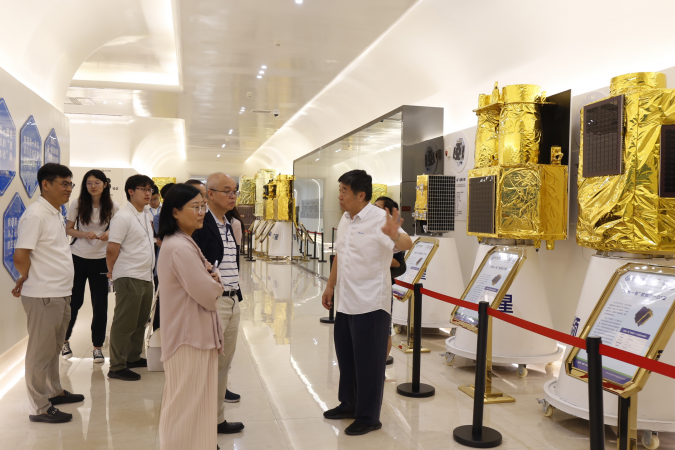A Fresh Look at Fathoming Global Warming
With the help of HKUST’s exciting satellite remote sensing technology and data advances, School of Engineering faculty are seeking more accurate weather forecasts and greater understanding of climate change to enable more effective planning and decision-making by policymakers, companies and individuals.
Anticipating the weather has been a preoccupation for people down the ages and around the world to assist with a huge number of activities ranging from farming to special occasions. Now weather forecasting and climate prediction are the domain of atmospheric scientists, such as Prof. SU Hui, Civil and Environmental Engineering, with the urgency of their work ever increasing as global warming makes greater inroads into people’s lives through extreme weather events.
Better forecasting
“Fundamentally, the goal is practical,” said Prof. Su, who joined the School of Engineering from NASA in September 2022 under the HKSAR Government’s Global STEM Professorship Scheme for top academic talents. “We want to improve the weather forecast, to have much more accurate prediction, and be able to predict further ahead. For climate, we may be predicting for 100 years ahead. So we want to reduce the uncertainty.”
The aim in doing so is to help decision-making in areas ranging from daily life, such as whether to take an umbrella with you or not, to an extension of accuracy over the medium and long-term to enable policymakers and companies to more effectively take weather and climate change into account in their planning. For example, to provide better three to six-month forecasts for rainfall for water resource management. Or to ascertain whether in 50 years the sea will rise three meters or five meters in order to assist land reclamation in Hong Kong.
Satellite insights
Now, the successful launch of Hong Kong’s first university satellite, HKUST-FYBB#1, in August 2023, has created the opportunity for new perspectives in a multitude of ways through the high-quality images and data of the Earth being made available to environmental researchers. Prof. Su, as a co-leader of the remote sensing satellite constellation project at HKUST, was a key figure in the notable development together with Prof. ZHANG Limin, Head of the Civil and Environmental Engineering Department. The launch was made even more exhilarating by the speed it came together – just six months from opening discussions within the University to take off at the Jiuquan Satellite Launch Center in Gansu Province, watched by an elated 50-strong HKUST delegation.

HKUST-FYBB#1 satellite image of Hong Kong taken on September 3 after the passage of Typhoon Saola.
Indeed the fast pace at which the collaborative project came to fruition was an eye-opener of its own for Prof. Su, more used to the heavy paperwork, high rate of rejection, and lengthy timescale of years involved in applying for government funding for satellite projects in the US. Although the HKUST launch involved many different parties – academics, senior management and University Council, postgraduate and undergraduate students, donors to support the project, and a leading Mainland satellite company – all worked with top-speed efficiency to propel the satellite safely aloft.
Initial targets for the data being provided by HKUST-FYBB#1 (named for the donors Mr. Francis YIP Chi-Hung and Mrs. Catherine YIP NG Bun-Bun) include a digital twin of the thousands of slopes in Hong Kong to address landslide hazards amid climate change in line with Prof. Zhang’s work on disaster mitigation and emergency management (see also e-In Focus – Issue 2 cover story). The advanced civilian satellite can identify objects down to half a meter in size, 20 times higher than open access images from the European Space Agency’s Sentinel-2 optical satellite.
Constellation boost
However, the launch is only the first step in HKUST’s environmental monitoring and forecasting aspirations. A long-term multifaceted strategic collaboration with partner Chang Guang Satellite Technology Company is now in place. In line with this, the University has sights set on leveraging the company’s 100-plus satellites – the world’s largest sub-meter commercial remote sensing constellation known as Jilin-1 – and its own research expertise in meteorology, oceanography, and environmental protection to provide data and new technologies to take forward societal endeavors such as carbon neutrality and greater understanding of the environment and resources.
For Prof. Su, a remote sensing data expert, the vision is to utilize the continuous data flow that a large constellation of satellites can provide to improve weather prediction models. “The US has a number of satellites. But the truth is the more the better,” she said. “What really matters for improving weather forecasts, I have found so far, is more observations.”
Clouds and hurricane research
Indeed, satellites have played a key role in Prof. Su’s research to date. During her 17 years at NASA’s Jet Propulsion Lab (JPL) before joining HKUST, a major area of focus was cloud formation, one of the most difficult problems for predicting long-term temperature or rainfall changes in climate models. As early as 2010, she received the prestigious NASA Exceptional Scientific Achievement Medal for advances in understanding water vapor and cloud feedbacks on climate change using quantitative analysis from observations provided by multiple NASA satellites. “Clouds are so changeable,” she said. “They come in different forms, different sizes, and on one hand block solar radiation, making the surface cooler, but also serve as a blanket to trap heat from the surface. It is this competing effect of warming and cooling that makes their net effect so uncertain. For climate models making predictions over 50 years, 100 years, it is the largest uncertainty.”
 Prof. Su (first left) together with University of California, Los Angeles (UCLA) interns at the Jet Propulsion Lab, where she worked for 17 years before joining HKUST School of Engineering in 2022.
Prof. Su (first left) together with University of California, Los Angeles (UCLA) interns at the Jet Propulsion Lab, where she worked for 17 years before joining HKUST School of Engineering in 2022.
Another main area of exploration is hurricanes and typhoons. Prof. Su and her JPL team were one of the first to build a machine learning model to predict hurricane intensity, targeting the special category of rapid intensification. With global warming, storms have been strengthening much faster than previously, becoming the largest error for operational forecasting as many weather forecasting models cannot handle this well. Using AI techniques and remote sensing data, Prof. Su’s team added more input parameters to the statistical model, resulting in improved forecasting capabilities compared to the operational model. This later led to modification of models at operational centers, including the US National Hurricane Center, based on the team’s research. In 2021, the team was awarded the acclaimed JPL Edward Stone Award for their work in this area, followed in 2022 by Prof. Su’s second NASA exceptional achievement medal. In external recognitions, she will receive the American Meteorological Society Banner I. Miller Award for this advance in the coming year.
Future vision
Both areas of focus will be taken forward at her new lab at HKUST. CliMet Lab is seeking to explore climate variability, extreme weather, satellite remote sensing, among others. One area of discussion for additional cloud data is to use the Chang Guang constellation to observe clouds frequently. This could mean almost every hour there would be a map of the clouds over China, “information with which we could really compile cloud distribution”, she noted. Another endeavor is developing methods and algorithms to provide application-oriented information from synthetic aperture radar (SAR) satellites. Such satellites are equipped to see through the thick clouds associated with typhoons that regular satellites cannot penetrate. With the capability to look through such clouds, it becomes possible to measure ocean surface winds, which is critical for typhoon forecasting. Further areas to be explored through SAR satellites range from land mapping and urban monitoring to disaster assessment.
A second HKUST satellite is also set to boost the University’s monitoring abilities of CO2 increases in the atmosphere. The project team are again working with Chang Guang and also raising funds to enable the satellite to be able to monitor carbon emissions every day over the Greater Bay Area (GBA). “From the beginning of the design for the instruments and measurement requirements, we have worked with the satellite company,” Prof. Su explained. “So this one is our own satellite.” The CO2 measurement will be important for providing data support for Hong Kong’s aspirations to be a carbon trading center, she added.
While external organizations may assist in receiving the satellite data, HKUST will host the data locally. Additionally, along with the GBA focus, the satellite will provide global data, with the University planning to use ground stations around the world for collection. The target for launch is currently next year or early 2025. Meanwhile, faculty in the School of Engineering’s Department of Mechanical and Aerospace Engineering are working on other aspects of satellite technology, including communication and optimal size of constellations, building payloads, and satellite thrusters, all of which can contribute to future developments.
A hazy start
But despite her success and passion for her work, it hasn’t always been clear to Prof. Su that researching weather and climate was her career of choice. Growing up with meteorologists as parents in the Provincial Bureau of Meteorology’s complex in Chengdu, Sichuan Province, she was surrounded by weather experts and large weather balloons from her youngest days. Her parents were keen she followed a similar path, seeing it as a career with job prospects. In her earlier years, she went along with this, buoyed by the ease she had in studying. She was also “always a good exam-taker”, she recalled, breezing to the top of the class at Peking University where she received her Bachelor of Science (summa cum laude) in Atmospheric Dynamics in 1991.
As the No.1 student in her class, she was recommended to enter the master’s program at Peking University without needing to take a further exam. But two years into the three-year degree, she decided to head overseas. She secured a place to take a PhD in Atmospheric Sciences at the University of Washington in Seattle, and in 1993 moved to the US, where she ended up staying for the next 30 years.
As she settled into a new location and culture, a more exploratory phase in her academic life began. Alongside her doctoral studies, she took courses in electrical engineering as well as passed initial two exams to become an actuary. But before she could set out on her plan to move into the actuary field, she got married and fell pregnant with the first of her two children, moving her thoughts back to the subject with which she was already so familiar.
Milestone moments
After receiving her PhD in 1998, she moved to Los Angeles, working initially at UCLA researching El Nino, and subsequently joining JPL, which proved a milestone in her thinking about her career. “We tell students you need to find your passion, follow your heart, but a lot of times you don’t know your passion until some moment or important event in your life,” Prof. Su said. In her case, this occurred at JPL. “I was constantly inspired at JPL. In the space business, we always had new missions, news coverage, a lot of excitement. That gave me the motivation to study weather and climate using satellite observations.
“I didn’t think I was passionate about weather and climate when I was in school, but only afterwards when I became more established, more involved in the research.”
The pandemic brought another milestone shift. Prof. Su realized it was time to be closer to her parents, after three decades away and with her children now at graduate school. Fired up following the AI hurricane modeling work that led to direct practical application, she thus began to look to a second phase of her career involved more closely in creating impact through application of her knowledge and innovation rather than writing papers.
At HKUST, she saw the possibility of doing both. Although her parents live in Chengdu, it is only around three hours away by plane from Hong Kong compared to some 20 hours from the west coast of the US. Moreover, as soon as she arrived in Hong Kong she felt at home with the city’s mix of Chinese culture and internationalized environment that jelled with both her early life growing up in the Mainland and her past three decades overseas. The emphasis on innovation and technology plus public and private support for R&D and knowledge transfer were further pull factors. “In Hong Kong and the Greater Bay Area, I felt there were a lot of opportunities for new science and technology developments, so here I am,” Prof. Su said.
Next-generation nurturing
Since coming to HKUST just over a year ago, the energetic academic has not only co-led the satellite project but relished the opportunity to serve as a professor. Currently, she is teaching two courses, enthusing students at different levels about her area through the introductory “Monitoring Changing Climate from Space” and fourth-year “Applications of Artificial Intelligence in Remote Sensing”. “It’s very rewarding,” Prof. Su said. “You feel you are raising the next generation of scientists and engineers. You are not just making some research achievement but nurturing and making an impact on a person.”
 Helping interest in satellite remote sensing take off among HKUST students.
Helping interest in satellite remote sensing take off among HKUST students.
In line with her interest in knowledge transfer, Prof. Su has been advising an entrepreneurial team of students from different departments across the University, leading to the formation of a start-up focused on remote sensing. She has also joined HKUST’s Women in Science and Engineering (WISE) faculty group, which nurtures top female students through scholarships and mentorship. In January 2024, Prof. Su will take a group of seven to eight students to South Korea to Ewha Womans University, where she was recently made a Fellow for her long-time collaboration with faculty there, as well as visit Hyundai and Samsung.
Beating the climate deadline
Powering Prof. Su on through in her many demanding roles is the growing general awareness and rising concern among people everywhere about climate change and global warming. While climate change used to be an academic discussion, now when she tells people it is her job to study weather, she finds herself engaged in conversations about extreme rainfall and other similar events. “More and more people are being affected,” she said. “This is also motivation for me. We need to work harder and faster to make impact.”
Related link:
- HKUST press release (Aug 26, 2023): HKUST Successfully Launches “HKUST-FYBB#1” Satellite
- HKUST press release (Aug 21, 2023): HKUST Launches Hong Kong’s First Higher Ed Satellite
- Department news (Sept 15, 2023): Prof. SU Hui and Co-authors Received American Meteorological Society Banner I. Miller Award
- Department news (Mar 6, 2023): Prof. SU Hui Elected Global Fellow of Ewha Womans University



